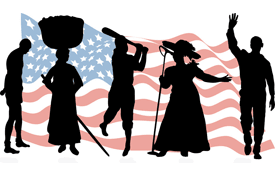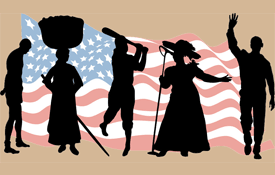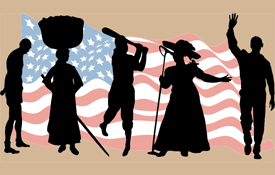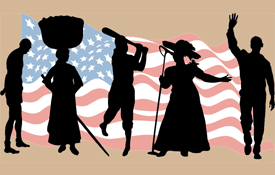Categories
-
0 The Gary Byrd Experience on the Radio
- Media
- by Hugh Smith
- 05/20/2015
Imhotep Gary Byrd, an award-winning radio broadcaster, poet, songwriter, and executive producer talks to Kingsley Hugh Smith at WWRL radio in Queens, New York about broadcasting, music, poetry, and social economics. Gary's album, Presenting The Gary Byrd Experience was originally released on vinyl in 1972. Luckily the record was re-released on CD in 2011 featuring the bonus tracks "Soul Travelin' Pts. 1 & 2" with The Jimmy Castor Bunch. The CD cover is pictured below.
-
0 The African American Struggle Against Bad Television Stereotypes
- Media
- by Hugh Smith
- 11/19/2014
Can you identify these men? Above are three of the stars from the television series Amos 'n' Andy that began in 1951 with new episodes through 1953. Syndicated reruns were finally pulled off of network television by CBS in 1966 because of audience complaints. To learn more about the history of African Americans on television you'll want to check out these three books: Primetime Blues by Donald Bogle is the first comprehensive history of African Americans on Network television. The Black Image in the White Mind: Media and Race in America by Robert M. Entman and Andrew Rojecki looks at the treatment of African Americans on network and local news. Finally Watching Race: Television and the Struggle for "Blackness" by Herman Gray covers how the meaning of blackness in television has changed since the days of The Jack Benny Show and Amos 'n' Andy.
-
- Media
- by Hugh Smith
- 04/14/2011
John H. Johnson was a publishing pioneer way ahead of his time. Read all the back issues of Jet from Johnson Publishing between 1950 - 2005 (courtesy of Google Books): 1950 1960 1965 1970 1975 1980 1985 1990 1995 2000 2005
-
0 Ebony Magazine Pioneer John H. Johnson
- Media
- by Hugh Smith
- 11/04/2009
John H. Johnson (1918 - 2005) is the founder of one of the most successful African American owned multi-million dollar publishing, cosmetics and insurance empires. He founded the Negro Digest in November, 1942, by republishing black oriented news from the African American and general market press. Johnson used a 20,000 name mailing list from his insurance company employer, (with permission), to pitch the Negro Digest to potential customers. He received 3,000 replies from eager folks requesting his periodical at a cost of $2 per subscription. The Negro Digest sold 50,000 copies per month within 8 months of the premier issue. Ebony, a picture based magazine, followed on November 1, 1945. By 1951, another magazine was launched, the pocket sized Jet. Jet’s focus featured more weekly news in less time for the reader by keeping the articles short. By 1958, Johnson Publishing began branching out into other fields. The company created the Ebony Fashion Fair, the world’s largest traveling fashion show (September, 1958).



